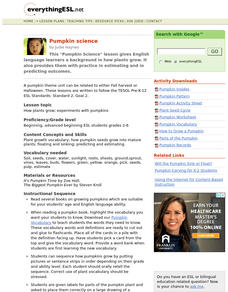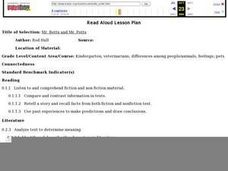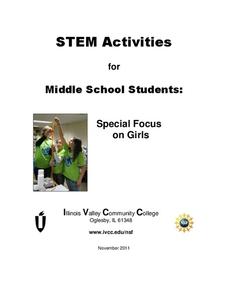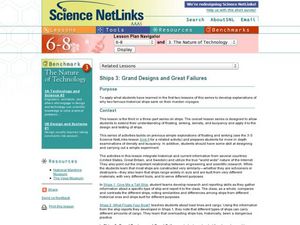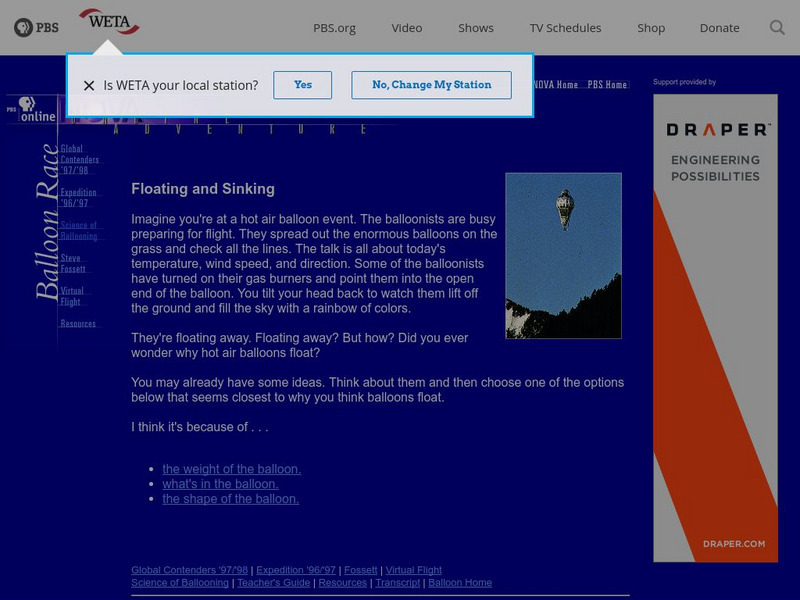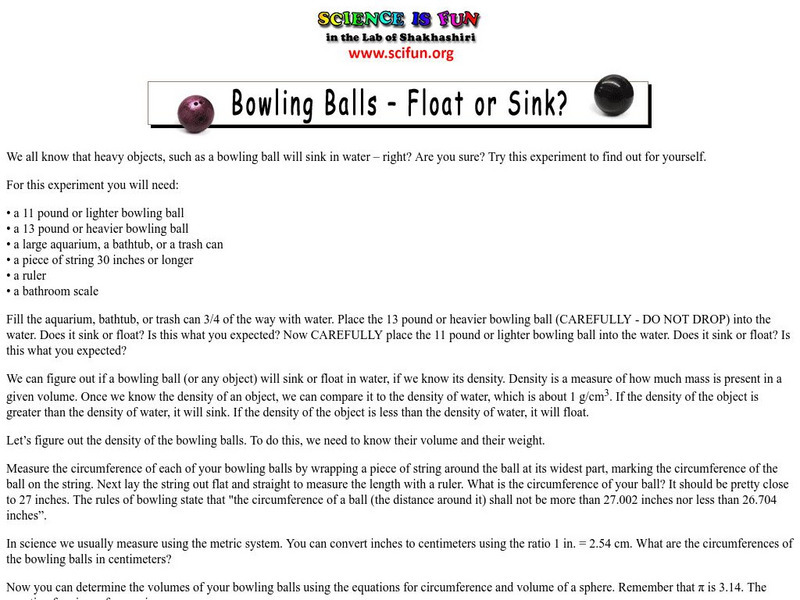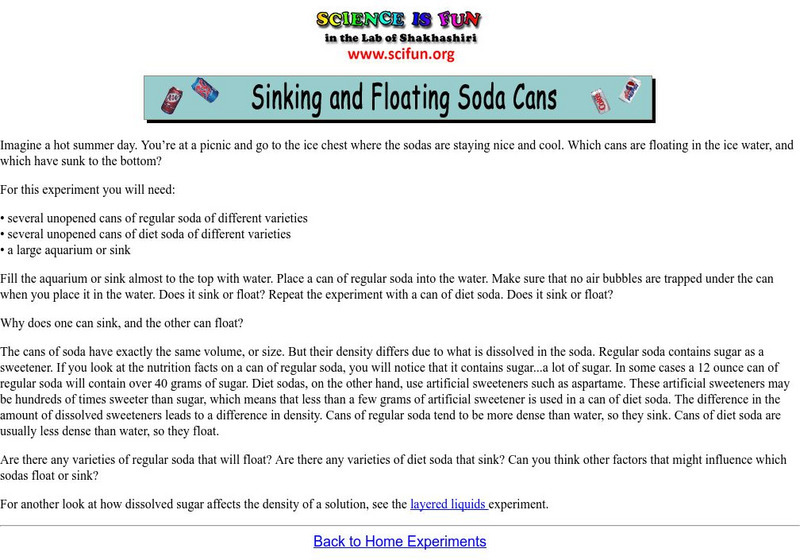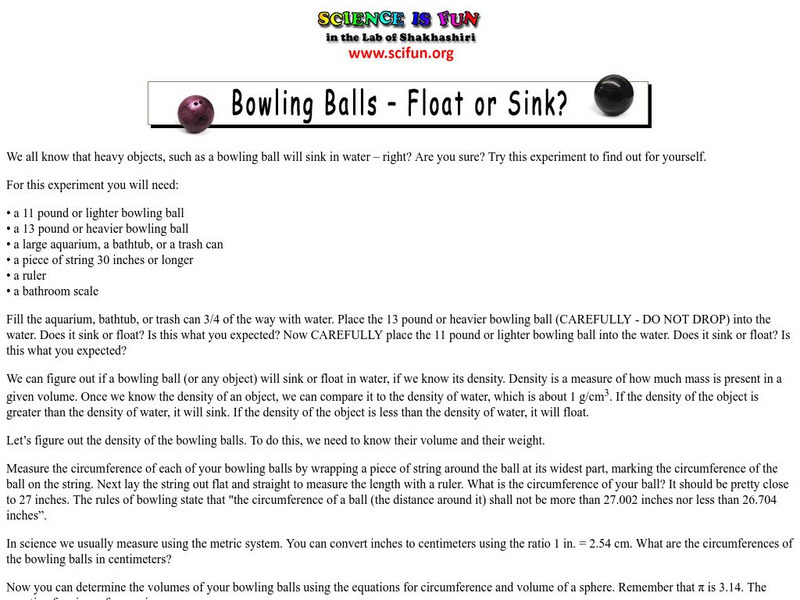Curated OER
Physical Properties Of Coal
Students examine and identify the observable properties of coal. After a lecture/demo, students perform a simple experiment. They observe samples of coal and record data in an organized manner.
Curated OER
#24 Rotating Frames of Reference in Space and on Earth
High schoolers explore rotating frames of reference, focusing on the weightless environment in space and the Coriolis force.
Curated OER
Let's Catch Some Dirt From the Air
Students create "catchers" that collect dirt particles from the air. They observe the particulate matter that is collected from the air and discuss the effects and causes of air pollution.
Curated OER
Water Density
Students identify and analyze the concept of density using the formula, density equals mass divided by volume. They review the differences in salinity levels of the ocean and note that the changes in density are caused by wind and...
Curated OER
Discussing How Plants Grow
Study how plants grow with your English language learners with a cross-curricular lesson revolving around pumpkins. These activities provide opportunities to practice new scientific vocabulary while practicing skills such as estimating...
Curated OER
"Mr. Betts and Mr. Potts"
First graders listen to the book "Mr. Betts and Mr. Potts" and examine the career of being a veterinarian. They categorize animals based on whether they could be house pets or not, develop a class pet graph, and list the various...
Curated OER
Mystery Liquids: Linear Function
High schoolers determine the linear equations of the density of water and oil by collecting data on the mass of various volumes of each liquid. They construct scatter plots from the data and use these to write the linear equations for...
Teach Engineering
Buoyant Boats
Eureka! Using the clay boats made in the previous lesson, learners investigate the idea of buoyancy and water displacement to finish the last installment of five in a Floaters and Sinkers unit. Their observations during the activity...
Illinois Valley Community College
STEM Activities for Middle School Students
Use STEM activities within the class to provide connections to concepts. The resource includes activities that range from working with buoyancy to building rockets and launching them. Other activities involve the engineering design...
Curated OER
The Impact of Invention
Learners explore the impact of invention. In this invention instructional activity, students examine how inventions are on going and affect all aspects of life in both good and bad ways. Learners will research the history of invention,...
Curated OER
The Letter Ww
Students explore letter Ww. In this letter recognition lesson, students participate in country, state, food, literature, physical education, colors, careers, music, and game activities that are linked to the main lesson page. Students...
Curated OER
Boat Design
Students build a boat and make predictions. In this geometry lesson, students design a cargo boat. They must show that the boat they designed can carry the cargo.
Curated OER
Inventions 2: The Impact
Students research inventors and inventions and their impacts. In this invention lesson, students research inventions and their affects in good and bad ways.
PBS
Pbs Learning Media: Floating and Sinking: Hot Air Balloons
Why do hot air balloons float? This resource from the NOVA Web site offers a series of interactive activities that illustrates the physics of hot air balloons.
Science is Fun
Science Is Fun: Bowling Balls Float or Sink?
In this experiment, you test whether two different bowling balls will float or sink, then determine the density of each of the balls to see if they are less than that of water.
Better Lesson
Better Lesson: Floating and Sinking Sorting in Science
Students sort objects according to whether they sink or float.
PBS
Pbs: Sesame Street: Science
A collection of interactives, videos, and documents on a variety science concepts.
Science is Fun
Science Is Fun: Sinking and Floating Soda Cans
An experiment to determine if either a regular or a diet can of soda will float or sink when placed in water, and what causes this.
Science and Mathematics Initiative for Learning Enhancement (SMILE)
Smile: Density in Relation to Float and Sink
Students find the densities of objects based on sinking or floating in this activity that demonstrates Archimedes Principle.
Science Buddies
Science Buddies: How Much Weight Can Your Boat Float?
Have you ever wondered how a ship made of steel can float? In this project you'll investigate how much weight boat hulls of various shapes and sizes can support without sinking.
Science is Fun
Science Is Fun: The Cartesian Diver
A simple experiment in buoyancy where you discover how to make a packet of sauce or candy float or sink at will, and why you are able to do this.
Science Education Resource Center at Carleton College
Serc: Investigating Density in Solutions: How Can You Make an Egg Float?
In this activity, young scholars will learn about density by determining how to make an egg float in water. By the end of the lesson, students will understand that density and weight are different and that density matters in floatation....
Science Education Resource Center at Carleton College
Serc: Density of Solid Objects
In this science inquiry, students investigate whether volume or density of objects determine the floating or sinking in water. Using a rock and a block of wood teachers engage students in the discussion of density, mass and volume.
Science is Fun
Fun Science: Bowling Balls: Sink or Float?
For a dramatic illustration of density check out this demonstration. It's simple to do, only requiring a bowling ball and some water.




